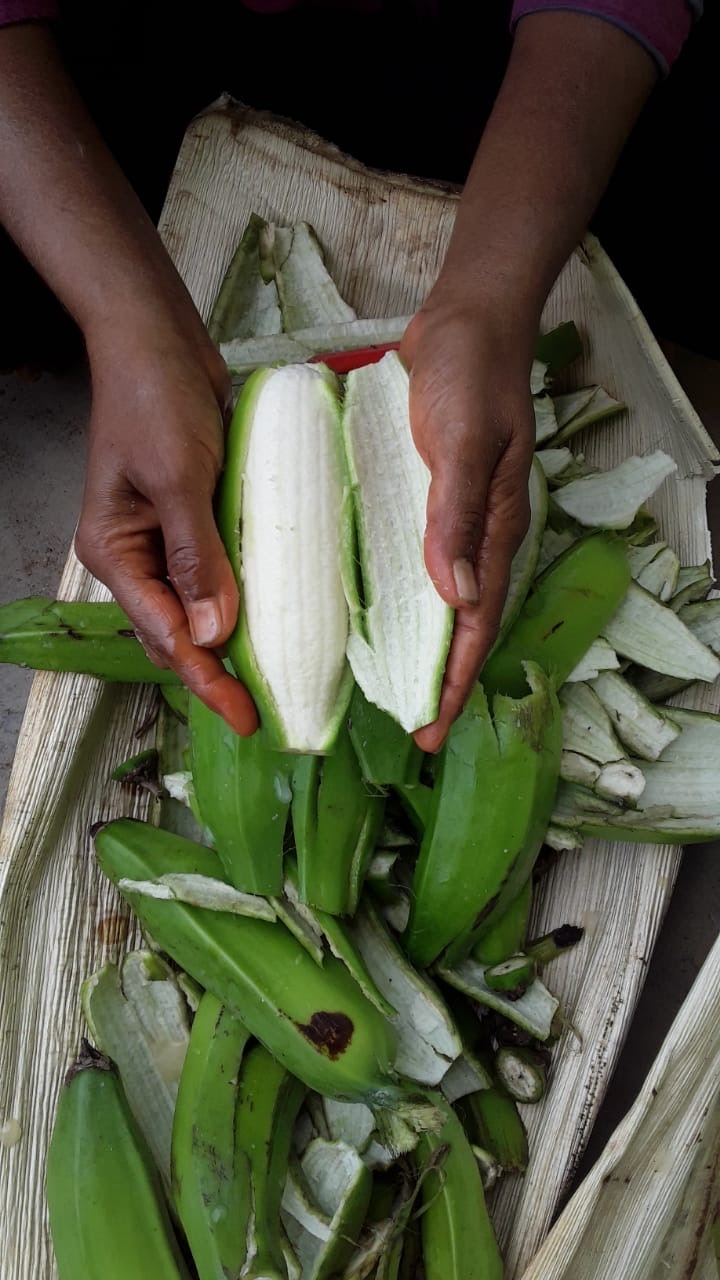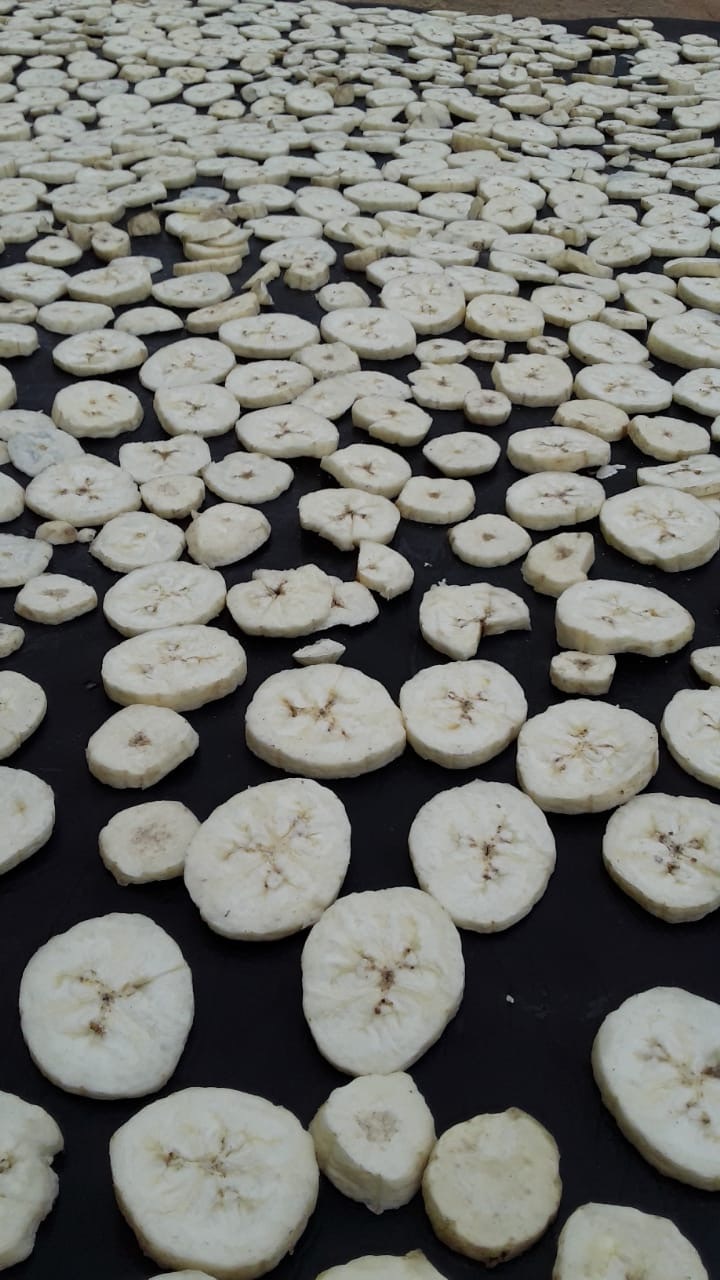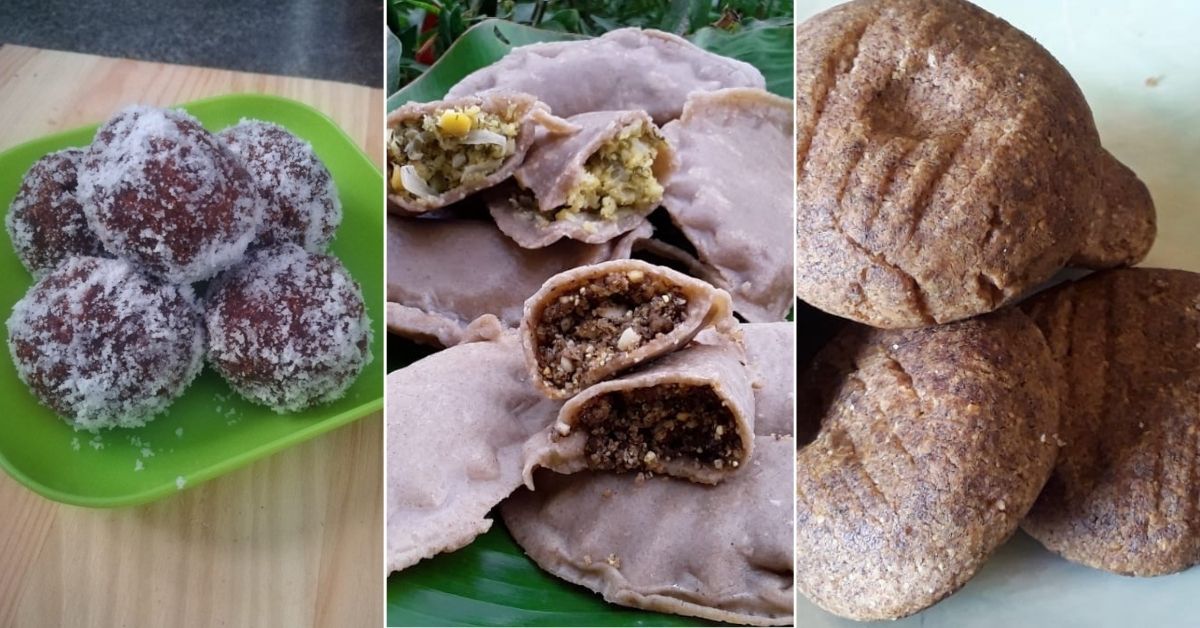Move Over Banana Bread. This Woman Is Making Waves With Banana Gulab Jamuns
Nayana Anand from Karnataka makes banana flour and prepares dishes such as chapatis, cutlets, cookies, and dry gulab jamuns, alongside helping farmers in the state prevent large amounts of wastage of their harvest.

In Karnataka, it is common for areca nut and coconut farmers to grow bananas to earn additional income. However, they depend on merchants to sell their produce and have no control over the pricing.
Banana is India’s second-most important fruit crop, and saw an abundant harvest this year. This led to competitive pricing and several farmers could not sell their produce at fair prices. While some were forced to sell their produce for throwaway prices like Rs 4 or 5 per kilogram, others ended up feeding it to their cattle.
In Tumkur district’s Athikatte village, 43-year-old Nayana Anand, an organic cultivator of areca nuts and coconuts, also saw this taking place. Through March and April this year, she received ripe and raw bananas from farmers living nearby as gifts.
“They were unable to sell their harvest, so they began distributing it to their near and dear ones. By the end of March, I had 10 hands of bananas at home,” Nayana says.
In an interview with The Better India, Nayana talks about how she came up with a unique solution to prevent the bananas from going to waste.

Learning from experts
At first, Nayana made a variety of dishes such as vadais and sweets at home. “However, there were still at least 50 fingers of bananas that were on the verge of spoiling,” she says.
It was then that she remembered that when there is an excess of jackfruit production in Kerala, it is common for farmers to dry them and make powder. “While raw banana powder is commonly found in the market, I did not know whether ripe ones can be made into flour. So I approached Shree Padre sir, a well-known journalist in Karnataka. He handles a WhatsApp group named Anytime Vegetables, which helps farmers in the state connect,” says Nayana.
Through that group, Nayana raised her concern and requested someone to teach her how to make the flour. Padre put her in touch with a researcher named Jissy George at Krishi Vigyan Kendra, Alleppey. “Over a phone call, she explained to me that it was a simple process and gave me detailed step-by-step instructions. The same day, I began preparing both raw and ripe bananas to make flour,” says Nayana, adding that the flour was ready within one week.

Here’s how she made it:
Step 1: Prepare a solution of 800 ml water and 200 ml of rice water.
Step 2: Add 10 gms of salt to the liquid.
Step 3: Peel raw and ripe bananas.

Step 4: Soak them in the solution for half an hour and slice them.

Step 5: Dry under the sun for two days, and more if the weather is cold.

Step 6: In a blender, powder the dry banana slices and store them in an airtight container.
“If you wish to make large quantities, you can approach a local flour mill and powder it using a pulverizer. While the powder has a shelf life of six months, the dried banana slices can be stored for more than a year. But, it is important to lay them under the sun for a few days every two months.” says Nayana.
From this flour, she now makes chapatis, cutlets, cookies, dry gulab jamuns and more.
Experimenting with recipes and teaching others
Once Nayana made the banana flour, for the first few days, she would add a large scoop of it to whole wheat atta and make chapatis. Later, she began preparing these dishes using only banana flour.
“The rotis have a slight sweetness but taste very rich. In the following weeks, I started experimenting with new recipes. First, I made a small list of dishes which are made using maida or wheat flour and replaced them with banana flour,” says Nayana, adding that she even made malt by adding millet-based flour and milk.
Nayana also made butter biscuits and a variety of sweets, including dry gulab jamuns, which were her favourite.
“To make the dry gulab jamuns, I mixed banana flour with milk powder. I added water and milk to the dry mix and made small balls. These were fried in ghee, soaked in sugar syrup and finally rolled in grated coconut. It was not only a delicious snack for my children,” says Nayana.

On hearing about her success in making banana flour, Padre requested her to share the process with other farmers on his WhatsApp group. Nayana shared a voice note with the steps, and also provided details about some dishes she had made.
On hearing this, several farming families were inspired and immediately started making the flour for personal use.
Padre says, “While the consumption of banana flour dates back to ancient times, none of the farmers here were aware that the process was so easy. Now it has become a revolution among thousands of banana cultivators in Karnataka. Instead of worrying about their harvest going to waste or selling for cheap prices, they are confident that they can easily make flour, and preserve it for a long time and earn more.”
He adds that over 50 farmers sent him messages about their success with banana flour, and that he continues to receive more. Some have already begun packaging the flour and selling it locally.
News of the banana flour revolution even reached the National Research Centre for Banana at Tiruchirapalli in Tamil Nadu. Director Uma Subbaraya sent Nayana a congratulatory note and thanked her for her enterprising idea.
Currently, Nayana is not selling banana flour but hopes to prepare and market value-added products like cookies.
If you found our stories insightful, informative, or even just enjoyable, we invite you to consider making a voluntary payment to support the work we do at The Better India. Your contribution helps us continue producing quality content that educates, inspires, and drives positive change.
Choose one of the payment options below for your contribution-
By paying for the stories you value, you directly contribute to sustaining our efforts focused on making a difference in the world. Together, let’s ensure that impactful stories continue to be told and shared, enriching lives and communities alike.
Thank you for your support. Here are some frequently asked questions you might find helpful to know why you are contributing?


This story made me
-
97
-
121
-
89
-
167











